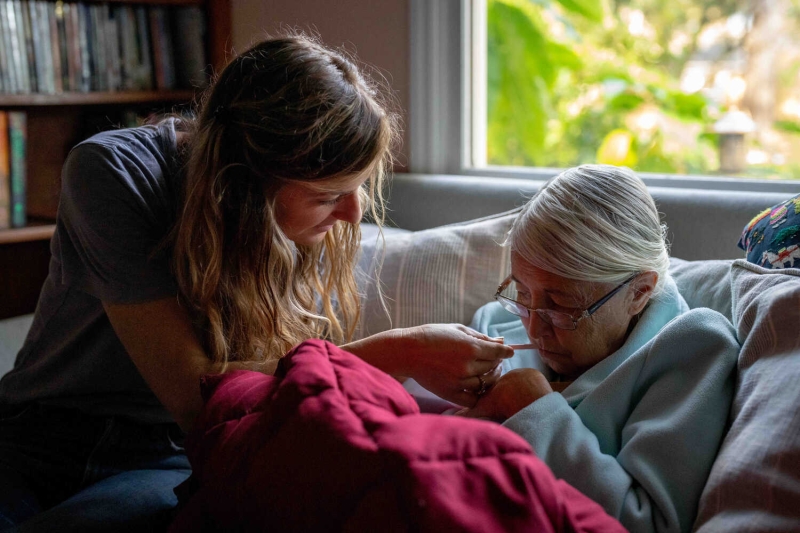Dying Broke

dying broke: The High Cost of Help
Facing a severe shortage of aides and high costs, people trying to keep aging loved ones at home often cobble together a patchwork of family and friends to help.
Photographs by Desiree Rios
This article is part of the Dying Broke series examining how the immense financial costs of long-term care drain older Americans and their families.
It’s a good day when Frank Lee, a retired chef, can slip out to the hardware store, fairly confident that his wife, Robin, is in the hands of reliable help. He spends nearly every hour of every day anxiously overseeing her care at their home on the Isle of Palms, a barrier island near Charleston, S.C.
Ms. Lee, 67, has had dementia for about a decade, but the couple was able to take overseas trips and enjoy their marriage of some 40 years until three years ago, when she grew more agitated, prone to sudden outbursts and could no longer explain what she needed or wanted. He struggled to care for her largely on his own.
“As Mom’s condition got more difficult to navigate, he was just handling it,” said Jesse Lee, the youngest of the couple’s three adult children. “It was getting harder and harder.”
“Something had to change, or they would both perish.”
Frank Lee’s search for trustworthy home health aides — an experience that millions of American families face — has often been exhausting and infuriating, but he has persisted. He didn’t entirely trust the care his wife would get in an assisted-living facility. Last August, when a respite program paid for her brief stay in one so Mr. Lee, 69, could take a trip to the mountains, she fell and fractured her sacrum, the bone that connects the spine to the pelvis.
There is precious little assistance from the government for families who need a home health aide unless they are poor. The people working in these jobs are often woefully underpaid and unprepared to help a frail, elderly person with dementia to bathe and use the bathroom, or to defuse an angry outburst.
Usually, it is family that steps into the breach — grown children who cobble together a fragile chain of visitors to help an ailing father; a middle-aged daughter who returns to her childhood bedroom; a son-in-law working from home who keeps a watchful eye on a confused parent; a wife who can barely manage herself looking after a faltering husband.
Most people were cared for by family, not professionals
Partners and daughters were the most common caregivers for people who needed help with daily activities.
Note: For those 65 and older who needed and received long-term care in 2020 and 2021.
Source: New York Times/KFF Health News analysis of Health and Retirement Study data for 2020 and 2021
By Albert Sun and Holly K. Hacker

